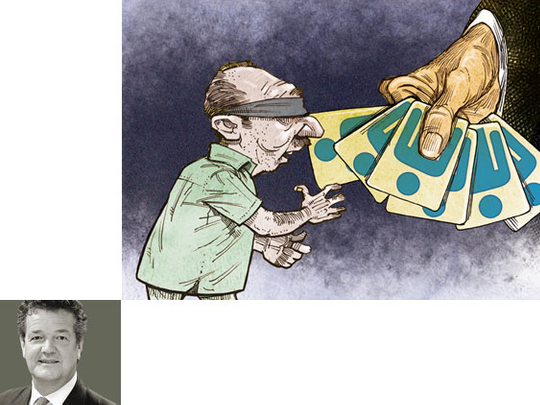
Tomorrow, Iran will go the polls to vote a new president who will replace the deliberately confrontational Mahmoud Ahmadinejad, though no real change is likely irrespective of whoever wins. Iran has three major challenges. One is to restart its disastrous economy, the other two are to resolve the confrontation with the outside world over its nuclear programme and to manage its involvement in the Syrian civil war.
The elections have already been rigged by the Supreme Leader, Ali Khamenei, who has encouraged the Council of Guardians to reject the candidacies of leading reformists, even including the former president Akbar Hassan Rafsanjani, who had impeccable Islamic revolutionary credentials.
Even the so-called reformists are all determined supporters of the Islamic Revolution, although they may be marginally less confrontational. All of them support Iran’s right to nuclear power and its right to enrich and develop its own nuclear fuel. Many have played important roles in the revolution and the war with Iraq and there is little dissent to Iran exporting its revolution to other countries in the region.
Khamenei wants a president that will work within his line of thinking. His activist interpretation of the post of Supreme Leader has devalued the previous awesome status which it held under the founder of the Islamic Republic, Ruhollah Khomeini, who had exceptional personal and religious authority.
Khomeini did not intervene in the rough and tumble of national politics and remained a remote and unquestioned figure of authority and the continuation of the post of Supreme Leader was not automatic after Khomeini’s death. Initially, a council of three members — Ali Meshkini, Mousavi Ardebili and Khamenei — was proposed, but the Assembly of Experts rejected the idea. Then Grand Ayatollah Mohammad Golpaygani failed to get enough votes and finally Khamenei got the job he wanted by a two-thirds vote.
As Supreme Leader, Khamenei is the leading politician in Iran, even if he has devalued the post of Supreme Leader from its previous exceptional status and made it into part of the complex web of interlocking elements of the Iranian government. This has the benefit of allowing Khamenei to play an active part of directing Iranian politics, but also has the result of bringing him into the political arena, making his actions vulnerable to either constitutional or popular review. The impact of this has yet to play out, but if something like 2009’s Green Revolution should happen again and succeed, Iran’s new leaders will put the post of Supreme Leader under very close scrutiny.
However, more immediately, overall direction of Iran’s strategy over the nuclear issue lies firmly with the Supreme Leader, even if Khamenei has refused to become part of active negotiations. When US President Barack Obama tried to recognise political reality and talk directly with Khamenei, he did not get very far and was forced to return to talking to the president and the nuclear negotiator.
Iran has a remarkably self-sufficient economy and it has been able to withstand years of international sanctions. However, even allowing for this huge disability, the new president needs to mend Ahmadinejad’s miserable mismanagement. He will also need to fix the overbearing bureaucracy, lack of investment and corruption, but will find it very difficult to tackle the large-scale government and semi-government businesses, which run for the financial and political benefit of their members. For example, the Revolutionary Guards own a huge commercial empire with annual revenues estimated at more than $12 billion (Dh44.13 billion) in sectors ranging from oil and gas to automotives and infrastructure construction like roads and bridges.
The candidates
By the middle of this week, the sole remaining “reformist” candidate is Hassan Rohani, who, on Tuesday, had received the full backing of both leading reformists and former presidents Mohammad Khatami and Akbar Hassan Rafsanjani. Rohani — a moderate cleric, who was the former chief nuclear negotiator known for his conciliatory approach — is an effort to attract the votes of those Iranians hoping for greater freedoms and an end to their country’s diplomatic isolation.
Rohani’s endorsement by the two reformist heavyweights followed the withdrawal of Mohammad Reza Arif, the only clearly reformist candidate who had been approved by the Guardian Council. Arif was told by Khatami that his continued candidacy was no longer within the interest of the reform movement and Arif accepted that his lacklustre style had won him little public following. Khatami’s plan is that all the reformist votes can focus on Rohani as one clear reformist candidate.
The political clarity from the reformists has not been matched by the conservatives who have a choice of four candidates who are all determined loyalists to Supreme Leader Khamenei, who interestingly has not intervened to indicate support for any particular one of his supporters.
This means that despite months of talks on the issue, the conservatives have been unable to unite behind a single candidate. These conservatives include the very tough former chief nuclear negotiator Saeed Jalili, who may be the leading candidate, and he has been clear that he will maintain an uncompromising stance in nuclear talks if he becomes president. This aggressive stance has been sharply criticised by Ali Akbar Velayati, the more emollient former foreign minister, who is now a close adviser to Khamenei. But some popular conservative support seems to be coalescing around the former police chief and current Mayor of Tehran, Mohammad Baqer Qalibaf.
Without a clear reformist candidate (like Mousavi in 2009), tomorrow’s elections may not bring much change, but reformist and young Iranians are very likely to vote in large numbers for the candidate their leaders have endorsed. No one has suggested a boycott. Therefore, it will be important to see how much separates Rohani from the leading conservative candidate and which conservative gains the most.










